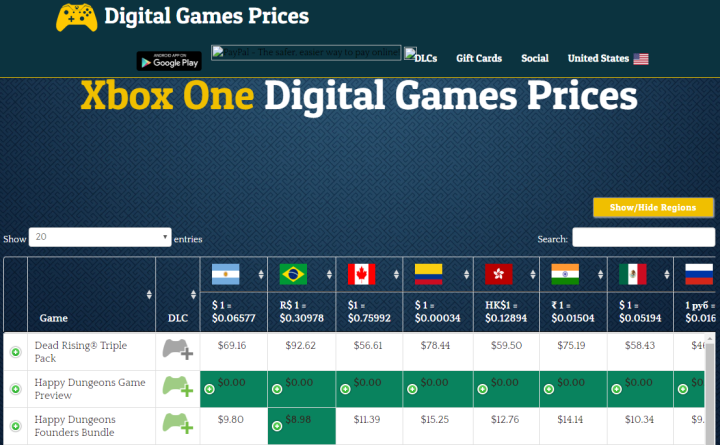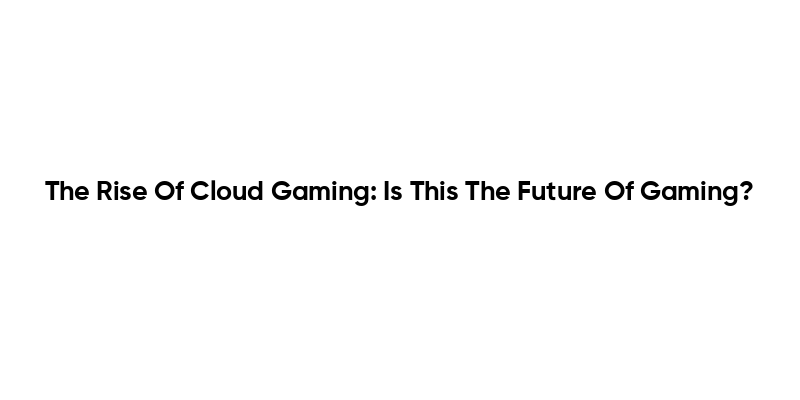Digital game prices have seen a notable surge recently, igniting widespread discussion among gamers and industry analysts alike. Major players like Microsoft and Nintendo have joined the trend, announcing that some of their flagship titles will now retail for an eye-watering $80, both in physical and digital formats. This shift in video game pricing is not just a simple case of market adjustment; it reflects deeper video game market trends and rising production costs that publishers are grappling with today. As digital game costs increase, many wonder what drives this uptrend, particularly since there are no physical tariffs impacting these online purchases. It appears that factors such as the burgeoning budget for AAA game prices and the sheer power of consumer acceptance might be leading publishers to embrace these higher price points simply because they can.
The recent upward shift in gaming expenses can be better understood through a closer examination of the costs associated with acquiring digital entertainment. As the landscape of the gaming industry evolves, the financial barriers to entry for high-quality titles have come under scrutiny. This phenomenon is often viewed in light of the economic principles that govern the video game market, where the rise in digital game expenses reflects not just production quality but also shifts in consumer behavior. From the perspective of gamers, the increase in video game costs, particularly among new releases, can signal a transition in purchasing power and willingness to invest in cutting-edge experiences. As these price hikes become more common, it prompts a deeper inquiry into the sustainability of such changes and the overall implications for both publishers and players.
Understanding the Rise in Digital Game Prices
The digital game market has been experiencing significant price increases, raising questions about the reasons behind these shifts. With publishers like Microsoft and Nintendo setting new price points, the cost of digital games is climbing to $80, matching physical versions. This change isn’t just a random decision; it reflects various factors impacting the electronic entertainment industry. Analysts suggest that these price hikes may arise from publishers’ attempts to align digital and physical game prices, ultimately trying to maintain competitive equity in the marketplace.
Additionally, the rising cost of game development can’t be overlooked. Creating an engaging, high-quality AAA game involves significant financial investment in talent, technology, and marketing. As development costs rise, publishers may feel compelled to offset these expenditures by raising game prices. Experts also believe that consumer tolerance for price increases has evolved, with the assumption that gamers are willing to pay for premium content. This shift in consumer perception allows publishers to experiment with higher price points without fear of losing their audience.
The Impact of Xbox Price Hikes on Game Pricing
Microsoft’s recent price hikes have sparked a broader dialogue about how corporate strategies in the gaming industry influence overall digital game prices. By increasing the cost of Xbox consoles along with select game titles to $80, Microsoft appears to be targeting premium gaming experiences and potentially enhancing overall profitability. Coupled with Nintendo’s similar pricing strategy, the market may witness a seismic shift where higher game costs become the new norm. This trend sets a precedent that could further influence how consumers perceive value in both digital and physical games.
As Microsoft continues to amass significant revenue, with a staggering $70 billion generated over three months, the rationale behind these price hikes becomes clearer. Companies often leverage profits to justify increased service and product expenditure, pushing them to elevate digital game pricing. Players may find themselves caught in the middle of these corporate preferences and economic trends as they navigate escalating game costs. Understanding how Xbox price hikes correlate with digital game pricing will be critical for gamers looking to make informed purchasing decisions.
Market Trends Shaping Video Game Pricing
The video game market is constantly evolving, with trends that can dramatically influence pricing structures. Recent years have seen a gradual increase in the prices of AAA games, with many titles now commanding $70 and, in some cases like *GTA 6*, discussions around even higher price points. Analysts attribute this trend to factors such as inflation, increased production costs, and changing consumer expectations. As players demand more complex, immersive experiences, game developers are forced to invest more, which directly impacts the end price for consumers.
In addition to higher development costs, other trends significantly affect video game pricing. The rise of digital distribution has altered how games are marketed and sold, introducing dynamic pricing strategies based on demand and consumer engagement. Services like Game Pass and subscription models have also transformed how gamers access titles, leading to a broader discussion about fair pricing in the current landscape. As such, understanding these market trends is essential for both publishers and consumers navigating the complexities of modern gaming economics.
Balancing Development Costs with Game Prices
In the face of rising costs associated with game development, publishers are increasingly reassessing their pricing strategies. The push to develop more elaborate and feature-rich AAA titles demands advanced technology and creative talent, leading to increased expenses from initial development through post-launch updates. As reported in recent discussions, studios are leaning towards raising digital game prices to bridge the gap between expenditure and revenue, ensuring a sustainable business model in an increasingly competitive marketplace.
This necessity to balance costs with pricing is not just a tactical decision; it’s a strategic alignment with the evolving gaming landscape. With consumers showing openness to higher price points, especially for premium titles, the industry could shift to a model where $80 digital games become commonplace. This approach helps game developers and publishers tackle financial challenges while delivering the high-quality experiences that gamers expect, ultimately fostering a more dynamic and engaging gaming environment.
The Role of Consumer Acceptance in Digital Game Pricing
Consumer acceptance plays a pivotal role in the digital game pricing debate. As audiences become more accustomed to paying premium prices for blockbuster titles, their willingness to embrace these changes significantly impacts publishers’ pricing strategies. The apparent lack of pushback on recent jumps from $60 to $70 for many AAA games demonstrates that gamers are not only accepting price increases but are also willing to invest in the evolving gaming experiences that come with them. This trend is likely to influence future pricing models across the industry.
However, this level of acceptance positions consumers in a unique dilemma; as publishers push for higher prices, gamers must remain vigilant about the value they receive in return. Trends indicate that without traditional pushback against rising costs, the potential for even more substantial increases looms large. The gaming community’s role in shaping pricing structures will be critical as digital game prices rise, guiding publishers towards a balance between profitability and consumer satisfaction.
Exploring the Future of AAA Game Prices
The future of AAA game prices appears uncertain yet intriguing, as industry dynamics rapidly evolve. With major players like Nintendo and Microsoft setting precedents for $80 prices, analysts anticipate that more publishers may soon follow. This transition reflects a fundamental shift in how the gaming industry values its products and what consumers may need to spend to access quality content. As development complexities increase, the expectation for gamers might include adjusting to higher price points in exchange for contemporary gaming experiences.
Moreover, the potential rise of flagship titles, exemplified by the anticipation for *GTA 6*, fuels discussions about pricing expectations. Should Take-Two introduce a $100 price for such highly awaited releases, it could further normalize high pricing to ensure that development costs are justified. These industry shifts prompt the broader question of how much gamers will be willing to pay for next-generation experiences and whether premium pricing will lead to increased consumer investments in digital gaming.
Consequences of Digital Game Price Increases
As digital game prices climb, various consequences emerge that could alter consumer behavior and market strategies. The immediate impact may drive gamers to reconsider their purchasing habits, potentially leading to increased scrutiny over which titles justify their high costs. Enhanced consumer communication about the value and quality of these games will become critical for publishers seeking to maintain strong sales. The market’s reaction to these changes will be essential in determining whether higher prices will become the norm.
Additionally, price hikes may lead to a resurgence in the discussion surrounding the accessibility of gaming. With the financial barrier to acquiring new titles rising, concerns grow about excluding segments of the gaming community. Companies must navigate this fine line, balancing heightened pricing strategies against providing a broad spectrum of accessible gaming experiences. As digital game prices surge, maintaining a diverse and inclusive market could play a crucial role in the industry’s long-term viability and health.
Evaluating the Long-term Sustainability of Game Pricing
Long-term sustainability in game pricing hinges on multiple evolving factors, including development costs, gameplay innovations, and consumer spending habits. Increasing prices could prompt a fundamental reevaluation of how video games are marketed and priced, demanding that publishers adapt their strategies to maintain financial viability while delivering quality experiences. This sustainability assessment is not just about meeting immediate profit goals; it’s about establishing a roadmap that considers future developments and the gamer’s evolving landscape.
Strengthening this sustainability may require publishers to invest more comprehensively in understanding consumer trends, engagement, and expectations. For example, observing how gamers respond to the pricing of different genres could inform future releases and pricing strategies, allowing companies to navigate market shifts more effectively. Consequently, balancing profitability with customer satisfaction will be vital, and preparing for potential future changes in pricing structures can bolster the industry’s resilience in adapting to upcoming trends.
Forecasting Video Game Market Trends and Costs
Forecasting video game market trends involves analyzing several critical indicators, including pricing shifts, consumer preferences, and technological advancements. As the gaming industry continues to adapt to its digital-first nature, growing costs will play a significant role in determining how prices will respond in the coming years. Armed with this foresight, game developers and publishers can make informed decisions about budgeting and pricing, ultimately shaping how players experience and invest in their favorite titles.
Understanding market trends also enables publishers to navigate wider economic conditions that may impact their pricing strategies. For instance, awareness of inflation rates and consumer spending habits can inform how publishers set prices for new releases. By closely monitoring these factors, stakeholders can anticipate changes in digital game pricing, ensuring that they remain competitive and relevant in a rapidly evolving market. As the industry moves forward, forecasting will be an invaluable tool for harnessing trends that shape the future of gaming.
Frequently Asked Questions
Why are digital game prices increasing in 2025?
Digital game prices are rising due to several factors, including the need to offset increased development costs and to align prices with physical versions. Publishers believe that game enthusiasts are willing to pay higher prices, particularly for AAA titles, which are often substantially more expensive to produce.
What are the current trends in digital game prices for AAA titles?
The trend in digital game pricing for AAA titles has seen many games exceeding the traditional $60 price point, with notable releases now costing $70 or even $80. This is fueled by rising development costs and a market shift towards premium pricing for big name titles.
How do video game pricing strategies affect the consumer market?
Video game pricing strategies have a significant impact on consumer behavior. When prices rise, such as the recent increases in digital game costs, it can lead to mixed reactions from consumers, who may weigh the value of new content against more expensive prices.
What could influence future digital game cost increases?
Future increases in digital game costs may be influenced by factors such as production expenses, market demand, and competition among publishers. With major companies like Microsoft and Nintendo setting new price standards, other developers might follow suit.
How does Xbox’s price hike compare to other platforms?
Xbox has announced prices for some digital games rising to $80, which aligns with Nintendo’s similar moves. This pricing is considerably higher than industry norms and reflects broader market trends where video game pricing continues to increase for both digital and physical editions.
Are gamers accepting of higher digital game prices?
While there has been some pushback, overall acceptance of higher digital game prices, particularly for AAA titles, seems to be increasing. Companies have found that consumers are willing to pay more, especially for well-known franchises.
What is the impact of video game market trends on digital game prices?
Video game market trends, including shifts towards more premium content and increased production costs, significantly impact digital game prices. As publishers adapt these trends, consumers can expect ongoing adjustments in pricing strategies.
Will the trend of increasing digital game prices affect indie games?
Indie games typically remain priced lower than AAA titles, but if general market trends push for higher digital game prices, even indie developers may need to reassess their pricing strategies to maintain profitability.
| Key Point | Details |
|---|---|
| Price Increase Announcement | Microsoft and Nintendo are raising prices of some games to $80, applicable to both physical and digital editions. |
| Reasons for Price Increase | 1. Offset rising costs in development 2. Align digital prices with physical editions 3. Market acceptance of higher prices 4. Publishers may charge more because they can |
| Historical Context | AAA game prices were stable at $60 for years, with a shift to $70 by Take-Two in 2020, which has now influenced other publishers. |
| Profitability and Market Impact | Microsoft reported $70 billion in revenue with a profit of $25.8 billion in the last quarter, which may affect pricing strategies. |
Summary
Digital game prices are experiencing a significant increase, with publishers like Microsoft and Nintendo setting price tags of $80 for select titles. This trend raises important considerations about the factors influencing these changes, such as rising development costs and market dynamics. As the industry evolves, understanding the reasons behind higher digital game prices can help consumers navigate their purchasing decisions.



